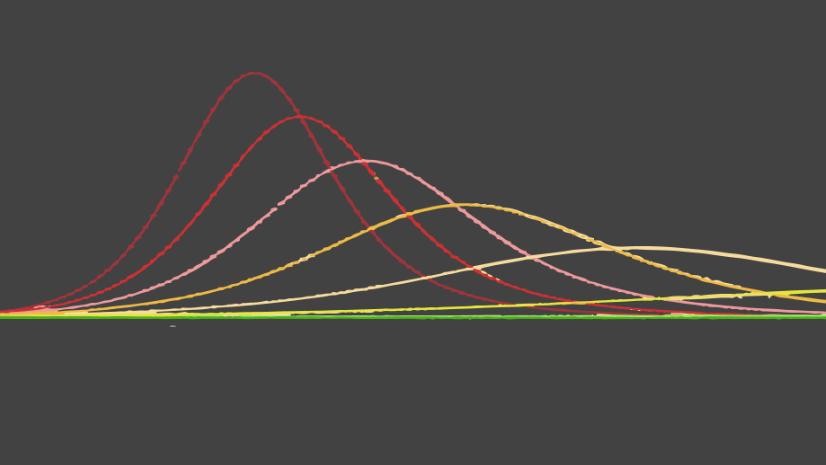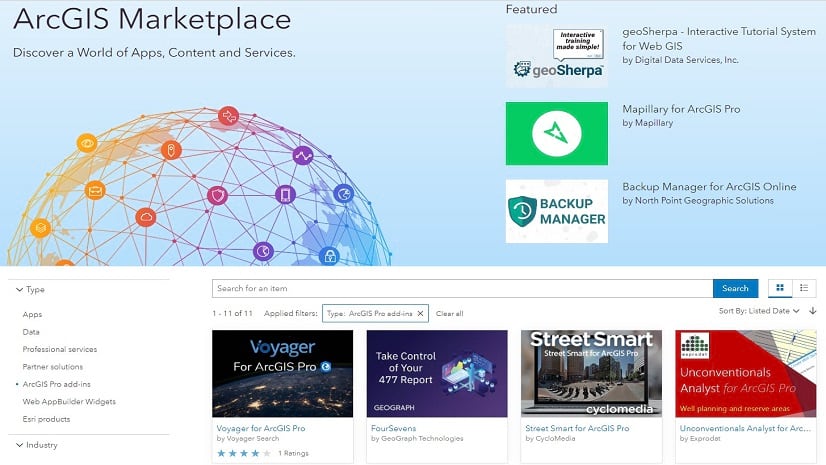Dev Summit technical sessions are now available online!
You can now view all the ArcGIS Pro SDK technical sessions from the 2020 Esri Developer Summit at the Esri Events Channel on YouTube. A playlist of the SDK videos can be found here and also the individual session descriptions and links are found below.
The sessions are a great way to get introduced to ArcGIS Pro development and extensibility, and to get updates on the latest SDK information and development patterns. In addition to the videos, the slides for the sessions will also be available on the Proceedings site in the coming weeks.
The Dev Summit was converted to an online virtual event due to the COVID-19 pandemic, and the plenary was hosted live online.
During this year’s plenary, Wolf Kaiser from the SDK Team gave an exciting demonstration of a Pro add-in using the Realtime Stream Layer API to capture transponder flight data for tour helicopters flying over the island of Kauai. Watch here as Wolf walks through the custom tools interacting with the 3D event data and scene, and then shows you how it’s accomplished in the code:
ArcGIS Pro SDK Technical Sessions
Beginning Pro Customization Showing Pro Extensibility Patterns of the SDK
Learn how to customize and extend ArcGIS Pro with its .NET SDK. We’ll show you how you can get up and running quickly with the Add-in, Configuration, Plug-in, and Core Host extensibility patterns and provide an overview of “DAML” the declarative extensibility programming language for ArcGIS Pro.
Developer’s Perspective: Diagnosing issues with Performance and Responsiveness in ArcGIS Pro
ArcMon is a diagnostic tool contained in ArcGIS Pro. ArcMon can help determine GUI Hang, application busy state, forground and background tasks, memory usage, and more. This session will demonstrate troubleshooting performance issues within your add-ins in ArcGIS Pro. We will also go over the usage of other performance evaluators such as the performance overlay in map views, ArcGIS Pro PerfTools and other helpful utilities.
Understanding Feature Services, a Guide for Developers
This is an intermediate level session for developers working with Feature Services in Pro. We will discuss feature service architecture and its relation to data storage and editing capabilities including branch versioning. We will provide guidance and insights into deployment options, authoring, publishing, caching, and dataset naming. We will explore how to work with default and named versions, short and long transaction types, and ramifications for save, undo, and cancel edits.
An Overview of the Utility Network Management API
This session will provide an overview of the utility network APIs for developing custom tools and applications for electric, gas, water and wastewater utilities. Topics to be covered will include accessing utility network metadata, tracing, and editing.
Beginning Editing with Focus on EditOperation
In this introductory session you will learn the development patterns for creating and updating features with the Editing API. We introduce the EditOperation and Inspector classes along with the different edit events. Finally you will learn how to create your own construction tool.
Advanced Editing with Focus on UI Customization
Learn how to add your own custom editing functionality into the Pro UI by creating an advanced modify tool. We show customizing the galleries and integration into the modify dockpanes. Additional topics include the EditOperation callback method, and working with mixed database environments.
Effective Geodatabase Programming
ArcGIS developers build applications that can access and interact with a geodatabase. Learn about key programming techniques and APIs that must be employed when developing high-performance geodatabase applications. This session will focus on issues that will allow developers to be more efficient, write less code, and save time. Explore the correct and effective programming patterns that should be employed when using the geodatabase API.
An Overview of the Geodatabase API
This session will provide an overview of the geodatabase .NET API (ArcGIS.Core.Data) for working with data in ArcGIS Pro, including working with datasets, fields, queries, selections, joins and relates.
Real-time Analysis and Visualization using ArcGIS Pro Real-time API
This session will show how to use the Real-time API to analyze, explore, and visualize events in ArcGIS Pro as they are happening in real time – whether you want to find nearby coffee shops from moving vehicles, or sending geo-fencing alerts or spatial analysis to compute affected areas as natural disaster strikes. The session also covers how to add a stream service, visualize latest and previous locations with separate renderers, limit the number of features drawn on a map based on query filter or by feature count, and draw real-time data on charts and perform analysis with them.
Optimizing Content for 3D: Scene Layers and Developers
Customers are creating and commissioning more 3D content than ever before. Esri users and developers need to advise end users on the tools, patterns, and techniques required to create the best performing 3D content for use in GIS. This presentation will discuss tools in ArcGIS for working with 3D content including common patterns in CityEngine and ArcGIS Pro for examining and converting 3D content. The session will also discuss a planned SDK for developers to generate and optimize I3S content.
Introduction to the Parcel Fabric API
This session introduces the Parcel Fabric API which is in pre-release at 2.5. We’ll cover the information model, concepts and editing patterns. Additionally, we’ll highlight COGO-specific patterns such as using ground to grid corrections and converting between different direction formats.
Enhancing the Managed API using the Cartographic Information Model (CIM)
In this session we strip away some of the mystique surrounding the Cartographic Information Model (CIM). The Managed API exposes commonly used functionality, whereas the CIM pattern allows access to more advanced capabilities. We use examples from maps, layers, and reports but the concepts we cover are broadly applicable to all of the CIM in general.
Demonstrating Pro Extensibility with Partner Add-Ins
Learn about the customization opportunities available with the Pro SDK through a series of demonstrations showcasing add-in products from Esri Business Partners. With each demo, we’ll discuss the user workflow, the different Pro APIs used, and resources for developers interested in building similar capabilities.



Article Discussion: